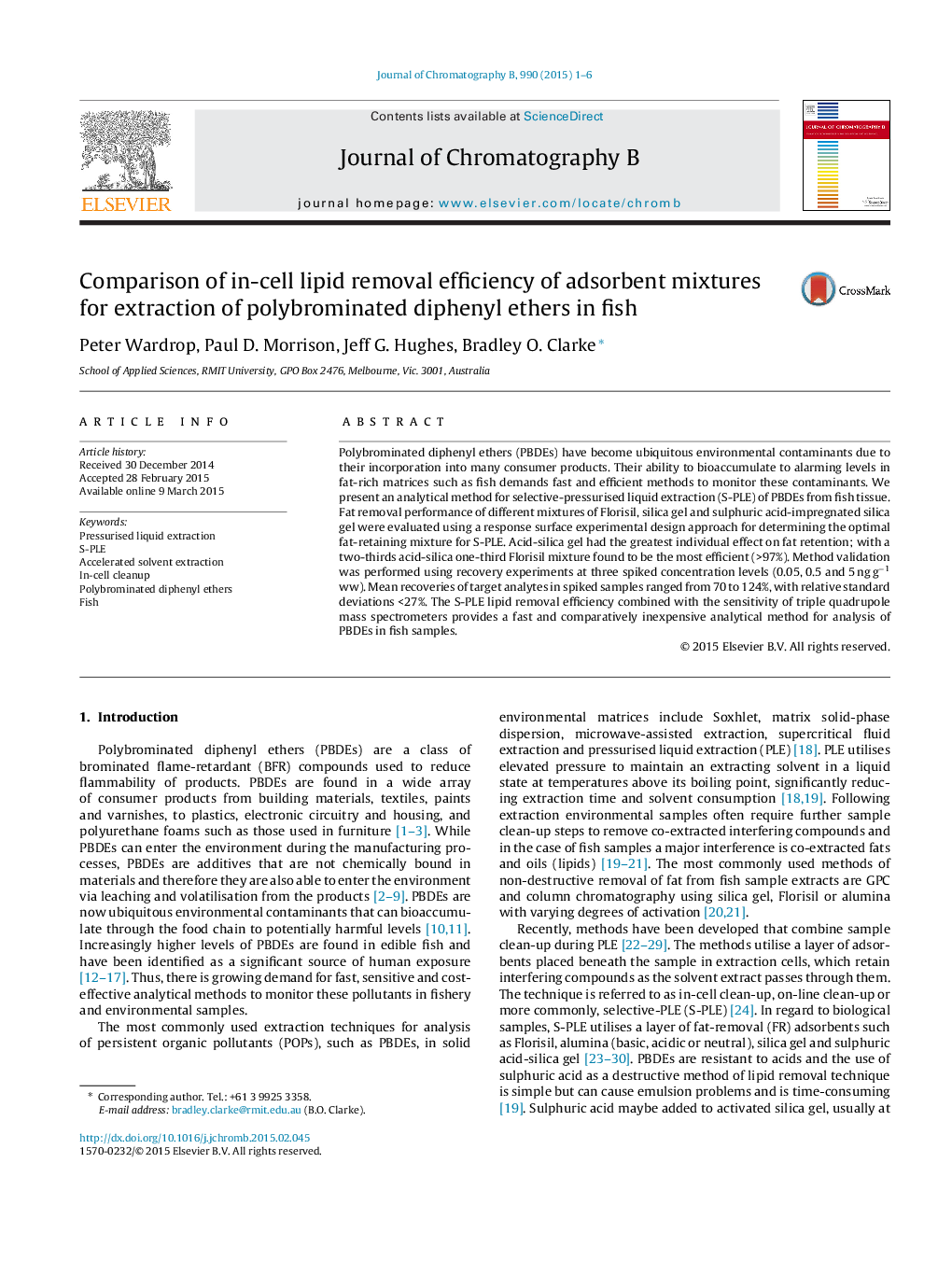| Article ID | Journal | Published Year | Pages | File Type |
|---|---|---|---|---|
| 1212212 | Journal of Chromatography B | 2015 | 6 Pages |
•We present a fast and inexpensive analytical method S-PLE for PBDEs extraction from fish tissues.•Maximum fat removal efficiency is from acid-silica in combination with neutral adsorbents.•Method validation (0.05, 0.5 and 5 ng PBDEs g−1 fish ww) showed mean recoveries between 70 and 125%.
Polybrominated diphenyl ethers (PBDEs) have become ubiquitous environmental contaminants due to their incorporation into many consumer products. Their ability to bioaccumulate to alarming levels in fat-rich matrices such as fish demands fast and efficient methods to monitor these contaminants. We present an analytical method for selective-pressurised liquid extraction (S-PLE) of PBDEs from fish tissue. Fat removal performance of different mixtures of Florisil, silica gel and sulphuric acid-impregnated silica gel were evaluated using a response surface experimental design approach for determining the optimal fat-retaining mixture for S-PLE. Acid-silica gel had the greatest individual effect on fat retention; with a two-thirds acid-silica one-third Florisil mixture found to be the most efficient (>97%). Method validation was performed using recovery experiments at three spiked concentration levels (0.05, 0.5 and 5 ng g−1 ww). Mean recoveries of target analytes in spiked samples ranged from 70 to 124%, with relative standard deviations <27%. The S-PLE lipid removal efficiency combined with the sensitivity of triple quadrupole mass spectrometers provides a fast and comparatively inexpensive analytical method for analysis of PBDEs in fish samples.
